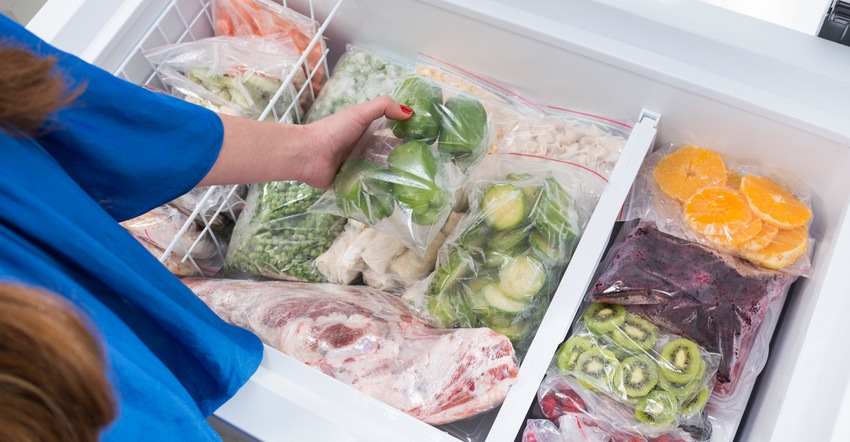August 13, 2021

Gardens are bursting with produce all over Kansas this month. And with a little planning, the garden goodies harvested this summer can be enjoyed well into the winter.
Kansas State University food scientist Karen Blakeslee says most fresh garden produce — green beans, corn, tomatoes, berries and more — can be easily frozen to be enjoyed later.
“Freezing food is an easy, inexpensive method to preserve food; it takes minimal investment in equipment and time,” she says.
Safe preservation
Blakeslee notes that from a food safety perspective, freezing food is a safe preservation method. Most produce can be frozen for eight to 12 months for best quality. “Always label and date packages of food, so you know how long they have been in the freezer,” she says.
Blakeslee and her colleagues at Kansas State University have published a guide, “Safe Food Storage: The Refrigerator and the Freezer,” with recommendations on how long common foods can be stored and still maintain safety and quality.
How to freeze foods well
She notes that how food is packaged will affect the quality of frozen goodies.
• Use plastic containers. “Look for containers that are designated for the freezer,” she says. “For meat, freezer paper is a good choice because it has a waxy layer on the inside to protect the meat. Reusing cheese or butter containers may be frugal, but those types of plastic containers can crack easily when frozen.”
• Don’t overfill. Don’t cram the freezer with food. “Freeze food in batches so that the freezer does not get overloaded,” Blakeslee says. “If the freezer is overloaded with warm food, it can take longer for food to freeze. Space out the packages so that cold air circulates around them.”
• Monitor temperatures. Blakeslee also recommends purchasing a refrigerator and freezer thermometer to monitor temperatures. A refrigerator should be held between 34 and 40 degrees F, and a freezer should be below 0 degrees. Clean the refrigerator and freezer regularly, and dispose of spoiled foods or damaged packages to reduce food odors, Blakeslee adds.
Blakeslee is the coordinator of the Rapid Response Center for food science at K-State. In that role, she publishes a monthly newsletter called "You Asked It!" that provides numerous tips on food safety and health.
Cool burn not so cool
Blakeslee says care should be taken to prevent freezer burn when storing food.
Freezer burn is characterized by dry, grayish-brown spots on the food’s surface. While not harmful, it’s not very appetizing; the condition is most notable on frozen meats.
“Freezer burn happens when food is not adequately wrapped to remove oxygen, which has a bleaching effect on the food surface,” Blakeslee says. “It results in poor texture, color, flavor and aroma.”
To prevent freezer burn, package food tightly in packaging designed for freezing. Remove as much air as possible and maintain a temperature of 0 degrees F or lower to freeze food quickly.
“If using freezer containers, crumple a piece of wax paper on top of the food to help minimize headspace,” Blakeslee says. “This helps prevent freezer burn and ice crystal formation, and keeps food pieces from drying out.”
For more tips like these, visit the K-State Rapid Response Center.
Source: Kansas State Research and Extension, which is solely responsible for the information provided and is wholly owned by the source. Informa Business Media and all its subsidiaries are not responsible for any of the content contained in this information asset.
You May Also Like




